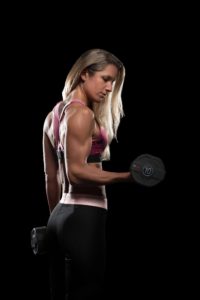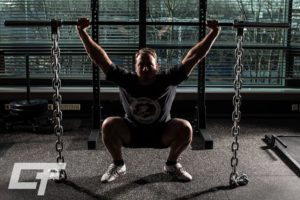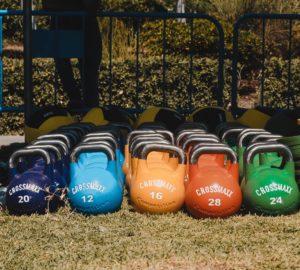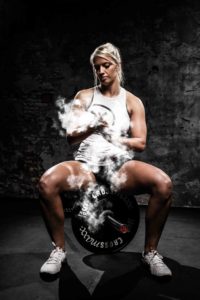I bet you want to do the following: You want to move efficiently. You want to develop more power and be at your best performance. In addition to this you want to get rid of pain and prevent injuries. To achieve all of this you have to focus on three movement principles: the stabilisation of your midline, the one-joint rule and the laws of twisting moment. First and foremost, however you have to answer two questions:
• Are you able to anchor your vertebral column in a stable position?
• Do you know how to create a twisting moment through your hips and shoulder?
Admittedly, these concepts are simple but the difficulty is to “internalise” them in the secure and controlled environment of a fitness club to such an extent that they can later be applied wherever it matters: in a match, dancing, in training. When you learn such a special power and endurance system you also learn a universal language of human movements. This means, when you command functional movements with the full range of motion – squats, pressing, pulling etc. –, you have acquired a generally valid, safe and effective pattern of motion. In other words: if you have internalised the principles of a correct deadlift you will also be able to lift any other object safely and effectively from the floor. And if you know how to properly perform squats or a jerk with barbells you also know how to jump and land again with an upright body – as is required for blocking in volleyball – without ruining your knees. And if you can stabilise your shoulder during pull-ups you will succeed in doing so when you climb a rock face.
The only catch is: performing functional movements at the fitness studio does not automatically mean you can also do this in everyday life. If you master pull-ups at the gym this does not mean you will also manage an overhanging rock. However, if you understand the movement sequence involved in a pull-up you will find it a lot easier because you already know how to produce a twisting moment and stabilise your midline. Once you have made these principles of movement your own and start developing movement patterns on this basis you can produce stable and efficient postures in just about every environment – regardless of whether you are surfing, ballroom dancing or playing football. You have acquired a transferrable blueprint for movements that is safe and effective.
Human movements are very complex. In order to establish generally applicable, functional motion patterns, you need a comprehensive power and endurance concept that can be transferred to all forms of movement. Beyond this, you have to identify and remove dysfunctional patterns of movement, instable postures and limited ranges of motion that compromise performance and/or hold the potential for pain and injuries.
The hierarchy of movements referred to here serves as a concept to break down movements and infer movement blueprints from them. These are then effective for rehabilitation after surgery or injuries,
• accumulating movement skills,
• understanding the complexity of movements,
• identifying abnormal movements,
• detecting limited mobility.
Movements are Complex
Your brain is geared to movements rather than muscles. It doesn’t think in terms of “quadriceps” or “posterior thigh muscles”. It thinks in terms of “movement”. Nevertheless, correct movements still have to be taught because even the simplest movement sequences are complex. So, we teach athletes running, deadlifting and squats with correct technique even though running, squatting and lifting objects from the floor are innate actions. The art here is to superimpose movements and movement progress in such a way that the learning curve is as steep as possible, the athletic skills increase rapidly and weaknesses are eliminated as quickly as possible.
When I first started thinking about optimising movements and their complexity, I looked at all of this from a rehabilitation perspective. I asked myself: how do I restore functional movement patterns after surgery or an injury? More precisely: How do I layer movement progress in the context of strength and endurance training in such a way that healthy and transferable movement patterns emerge? I proceeded like this: First, I introduced the three movement principles. Then I applied them to basic exercises with a wide range of movement, such as squats, deadlifts, push-ups, pull-ups, etc.
Once an athlete mastered one of these exercises well, I began to put their stability to the test by first increasing weight and then endurance to finally demand more upright body postures. If, for example, an athlete succeeded in doing back squats (squats with the barbell behind their head), they had to put the barbell on their chest or run around the block a few times – to complete another series of back squats.
Finally, I put the motor control of the athlete and their mobility to the test by adding a speed task and complex movements such as weightlifting and burpees. It struck me that by systematically sequencing movements, I was able to not only rehabilitate injured athletes, but also improve the quality of movement at every skills level as long as I methodically moved from light to heavy and from simple to complex. Healthy movement patterns were established, weaknesses in movement were discovered and eliminated.
Let me explain using squats as an example: you teach an athlete the squat and notice that their knees sink inwards on the way to the end position (valgus position of the knees). This indicates that either they don’t know the knee bend technique – creating a twisting moment by screwing their feet into the ground and moving their knees outwards – or they can’t do it because they lack range of motion somewhere. We can assume that this error occurs even more during more complex movements and under greater stress: if an athlete’s knees sink inwards during a squat performed without additional weight, there is a high probability that this will also happen when jumping and landing.
Motion errors and mobility impairments should be determined under conditions that minimise the risk of injury. For constant progress it is indispensable to check and measure the athlete’s motor skills and mobility time and again. For this to succeed, both the coach and the athlete need to know how to perform the movement correctly and why some movements are more complex than others. Imagine if someone tore a cruciate ligament in the early stages of rehabilitation. That would be regrettable, if not ridiculous. You wouldn’t teach someone to snatch without first familiarising that person with squats with overhead weights.
Whether you’re working with someone in rehabilitation, training beginners and improving their movements or coaching a top athlete, the hierarchy of movements can be used universally to systematically shed light on movement control and range of motion problems, and to expose athletes to training stimuli that improve performance and eliminate pain. I have divided movements into three categories based on stabilisation and speed. You have to be aware that the following movements are only a fraction of the exercises you can and should use in training. The basics allow you to make the connection between movement principles and the exercises and training content used in the gym.
Category 1 Movements
This type of movement includes squatting, pressing and pulling: squats without additional weight, back squats, front squats and overhead squats (squats with barbell on the shoulders behind, in front of and above the head), push-ups, bench presses, pushes overhead, deadlift. Movements in this category are performed relatively slowly, usually with full range of motion, and are close to everyday motor skills – such as picking something up from the floor. In Category 1 movements, a twisting moment can be built up and maintained over the entire range of motion. Category 1 movements, especially squats, deadlifts, push-ups and front presses, serve two main purposes. They enable you to establish optimal movement quality in your motor skills layer by layer. The movements are also first-class diagnostic tools for evaluating movement technique and mobility restrictions. All these exercises have one thing in common: you start in a high stability posture (HSP) – an anchored neutral position that allows maximum hip and/or shoulder torque – and maintain this stability throughout the range of motion.
Let’s take squats as an example: you start in an HSP (original position), lower the body and end the movement in the same HSP (original position). The fact that your feet are connected to the floor during the entire process allows you to maintain torque throughout the entire range of motion. Through the torque you are constantly in contact with the movement, so to speak.
Category 2 Movements
Category 2 movements also start and end in a high-stability posture. But instead of keeping torque throughout the complete range of motion, a speed element such as jumping and landing, wall ball, snatch balance, running, rowing, etc. is introduced into the sequence.
Jumping and landing is a perfect example. You start in an HSP, give up the connection (torque) at the moment of jumping and have to stabilise your spine, screw your feet to the floor and move your knees outwards to get back to the HSP. You start and end in the same posture, but by giving up the torque and adding speed (jump) you increase the movement control and mobility required by the exercise. You will find that Category 2 movements are much more likely to reveal weaknesses. Athletes can still disguise movement weaknesses and mobility impairments in Category 1 movements. Therefore, you must constantly test their control and range of motion. It is quite possible that you can control a squat, but if it is to be performed after a low jump, everything breaks down: the feet are turned outwards, the ankles collapse, the knees sink inwards, the lumbar spine is overstretched. To improve as an athlete, you have to work hard on your weak movements. It is not enough to move fast, lift hard or do many repetitions. The more athletic it gets, the more you need to be able to adopt stable and safe postures without digression. Your musculoskeletal system only functions properly if it is stable in end positions.

Category 3 Movements
Category 3 movements are, to a large extent, very similar to those in sports. This means a change of direction: from pulling to pushing, jumping and then landing in a new posture, etc. The definition for Category 3 movements is starting in one posture, abandoning the connection (torque) and arriving in a completely different posture. The athlete must therefore be able to develop stability while changing posture and/or direction.
One of the most difficult and obvious category 3 movements is the snatch. You start in a pulling posture, then extend your hips completely and then lower yourself with arms overhead to the end position of the squat. As the bar moves upwards, there is a moment of weightlessness when you give up the torque to the floor and bar: this is the transition posture where the connection “breaks off”. At the lowest point of the knee bend with the weight above your head you reach the HSP. You move from one position, the transition position (pulling position), separate the connection and arrive in a completely different position – the squat with the weight above your head or HSP. Similar to category 2 movements, many athletes’ postures collapse when confronted with these complex exercises. The simple reason for this is that the changes in direction are very difficult to manage. You can no longer hide weaknesses in the movement pattern and the limited range of movement. And that is exactly the goal. Remember: in order to achieve constant progress, it is indispensable to recognise, work on and solve all problems with movement control and mobility.
Summary
Category 1 movements such as squats, deadlifts and bench presses must be completed in order to acquire basic movement principles. However, to further improve an athlete’s performance and to test his ability to stabilise the midline and develop torque, you need to resort to Category 3 movements such as weightlifting.
A true love for sports





Recent Comments